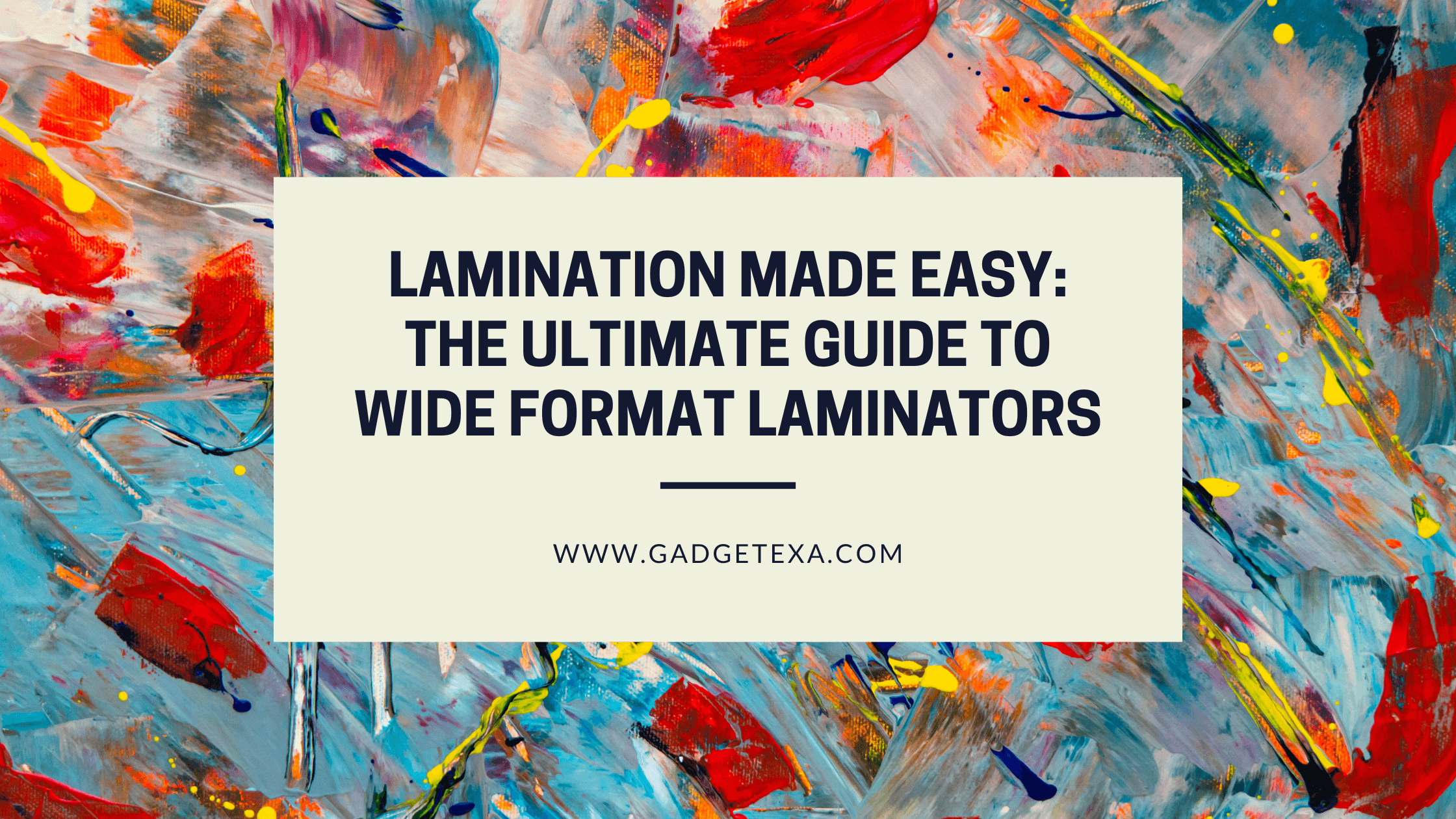Are you looking for a way to preserve and protect your wide format prints? Look no further than wide format laminators!
In this guide, we’ll cover everything you need to know about these machines, from what they are and how they work to the different types available and key features to consider when buying one.
What are Wide Format Laminators?
First things first: what exactly are wide format laminators? Simply put, they’re machines that apply a protective layer over large prints or graphics, such as posters, banners, and signs. This layer, known as a laminate, can be made from various materials, such as vinyl, polyester, or polypropylene. The laminate not only protects the print from damage and fading but also enhances its color and contrast, making it more vibrant and eye-catching.
How do Wide Format Laminators Work?
Wide format laminators work by using heat and pressure to seal the laminate onto the print. The laminate comes in rolls, which are loaded into the machine. The print is fed through the laminator, which applies heat to activate the adhesive on the laminate and pressure to bond it to the print. The excess laminate is trimmed off, leaving a perfectly sealed and protected print.
Types of Wide Format Laminators
There are several types of wide format laminators available, each with its own pros and cons:
Pouch Laminators
Pouch laminators are the most basic type of laminator and are suitable for small or occasional jobs. They use pre-made pouches, which consist of two sheets of laminate sealed on one side. The print is placed inside the pouch, which is then fed through the machine, sealing the laminate around it.
Roll Laminators
Roll laminators are more advanced than pouch laminators and can handle larger prints and higher volumes. They use rolls of laminate and have adjustable rollers to accommodate different thicknesses. Roll laminators can be either hot or cold, depending on whether they use heat to activate the adhesive or not.
Wide Format Laminators
Wide format laminators are specifically designed for large prints and graphics. They can handle widths of up to several feet and are available in both roll and pouch formats. Wide format laminators can be either hot or cold and may have additional features, such as adjustable temperature and speed settings.
Key Features to Consider
When choosing a wide format laminator, there are several key features to consider:
Size
Make sure the laminator can accommodate the size of your prints. Measure the maximum width and thickness of your prints and compare them to the laminator’s specifications.
Speed
Consider how many prints you need to laminate per hour and choose a laminator with a suitable speed. Keep in mind that faster machines may be more expensive.
Temperature
Hot laminators are faster and more versatile than cold laminators but require more maintenance and may not be suitable for heat-sensitive prints.
Brand and Warranty
Choose a reputable brand with a good track record of quality and reliability. Look for a warranty that covers both parts and labor and provides adequate support and service.
Frequently Asked Questions about wide format laminators
Q1. What is the difference between hot and cold laminators?
A: Hot laminators use heat to activate the adhesive on the laminate, while cold laminators use pressure alone. Hot laminators are faster and more versatile, but may not be suitable for heat-sensitive prints.
Q2. Can I laminate both sides of a print?
Yes, you can laminate both sides of a print using a double-sided laminate. These laminates have adhesive on both sides, allowing you to seal the print between two layers of laminate for extra protection.
Q3. Can I use any type of laminate with my laminator?
A: No, it’s important to use the correct type of laminate for your laminator. Check the manufacturer’s specifications to ensure the laminate is compatible with your machine.
Q4. Can I laminate other materials besides paper and vinyl?
A: Yes, some laminators can also laminate fabrics, foam boards, and other materials. However, you should check the manufacturer’s specifications to ensure the laminator is suitable for the material you want to laminate.
Q5. How do I maintain my laminator?
A: Regular maintenance is important to keep your laminator working properly. Follow the manufacturer’s instructions for cleaning and lubricating the machine, and be sure to replace worn or damaged parts as needed.
Conclusion
Wide format laminators are an essential tool for anyone who needs to protect and enhance large prints and graphics. By understanding the different types and key features, you can choose the right laminator for your needs and ensure your prints look their best for years to come.
Read more GADGETEXA blog here>> Click it


